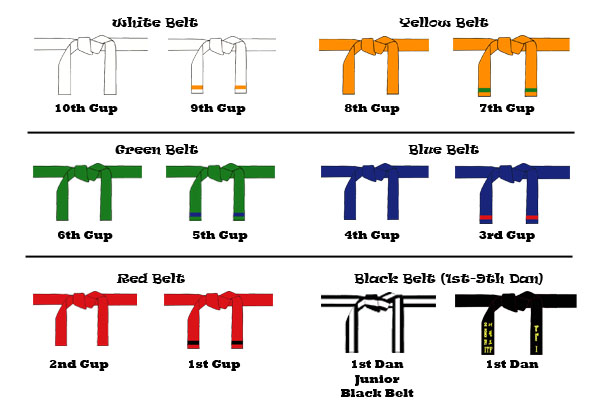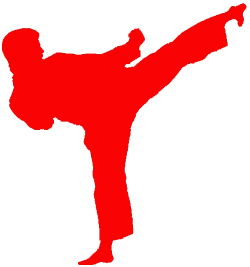|
Current Black Belt, Moose Tyler performs Taekwondo form set, Palgwe 2 as part of her Junior Black Belt Test on Oct. 5, 2012 at Grand Master Reeder's Martial Arts Center in Oklahoma City.
0 Comments
Current Black Belt, Moose Tyler performs Taekwondo form set, Taegeuk 2 as part of her Junior Black Belt Test on Oct. 5, 2012 at Grand Master Reeder's Martial Arts Center in Oklahoma City.
1st Dan, Moose Tyler completes the board breaking portion of her skills test.
The Mayor of Mooseville completes the board breaking component to earn her black belt in Taekwondo on March 1, 2013.
A Guide to the Taekwondo Belt System If you're thinking of taking Taekwondo lessons, one of the first things you should know is you're going to get a lot of belts.
Belts don't make you a better fighter. They won't make you love martial arts any more or less, and you certainly don't need them to hold your pants up because most uniforms come with an elastic waist and drawstrings. The benefit to a belt system has nothing to do with utility and everything to do with mindset. They're essential to help you focus during what is often repetitive and rigorous training. Keep Your Eye On The Prize Belts are goals practitioners set and then work hard to achieve. Each level pushes the martial artist harder both mentally and physically, and by the time you've reached the higher belts you're stronger, more disciplined, and in the best shape of your life. Studying martial arts takes patience and time, and Taekwondo is no exception. Earning a black belt doesn't happen over night. It can take anywhere from 3-6 years, depending on the quality and philosophy of the Dojang. Whether they rush you through or actually make you learn the stuff, earning a black belt is a commitment and it helps to have some brightly colored goals to help you stay on the path. Junior Levels The junior level has 10 ranks (gup) that are referred to as the "color belts." Typically students start out at tenth gup (or white belt) and work their way to first gup (often a red belt with two black stripes but sometimes a black and red striped belt). The range of colors differ for each Dojang. The traditional belt colors are white, yellow, green, blue, and red, with each belt requiring two stripes before advancing to the next color level. Some Dojangs offer additional colors to keep their students moving (and to keep testing fees rolling in). In addition to traditional colors, the orange, purple, and brown belts might also be required before students are eligible for senior levels. The additional colors don't extend the training period. It just requires practitioners to test more frequently. Senior Levels The senior level has nine ranks (dan) that are referred to as the black belts or degrees. Before earning a first-degree black belt (or first dan), practitioners under the age of 15 must first become a junior black belt. In many Dojangs all practitioners must achieve junior black belt status before advancing regardless of their age. Junior black belts are red and black striped belts. Once you've earned the junior black belt, you then have to wait anywhere from 4-6 months before becoming a full black belt. Testing To move up a belt level in Taekwondo you have to complete a series of tests, each one building on the other. Tests require you to master a variety of kicking and basic exercises, as well as the more complex form sets. There's also a board breaking requirement, and in certain Dojang's a boxing element. The amount of time between tests in the junior level is minimal compared to the senior level. At junior level, depending on your gup, you'll have to wait anywhere from 1-4 months between tests. At senior level the time that must pass between each test increases greatly. Practitioners at the senior level can be waiting anywhere from 1-2 or more years between tests. The Sign of Hard Work Working your way through the Taekwondo belt system takes patience and endurance. It helps to have goals which is why belts are needed. It's not a perfect system and some Dojangs abuse it, but overall belts are a good idea to keep you focused. Plus, once you've advanced, you can get a display and hang your old belts on the wall. Just as it's important to set and work towards goals, it's equally important to sit back from time to time and admire the fruits of your labor. Practicing martial arts provides many benefits. It gives you valuable self-defense skills and, at the same time, is a graceful and moving art form. Although these benefits are nice, the biggest reason to practice martial arts is: it's an unbelievable workout.
|
About The Dojo
The Dojo is Mooseville's premier martial arts training center. We push our athletes to reach their fullest potential both physically and mentally. Founded by Moose Lee, The Dojo offers a variety of classes in all things martial arts. Self Defense
|

















